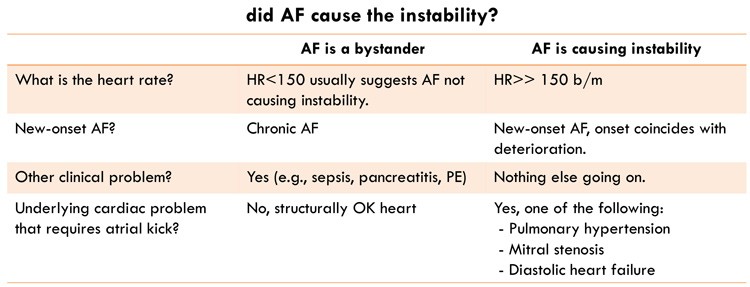
Contents
What Rate is RVR?
RVR, which stands for rapid ventricular response, can occur due to atrial fibrillation. A ventricular rate over 100 beats per minute is considered rapid ventricular response.
Atrial fibrillation with RVR happens when the atria contract rapidly, causing the ventricles to beat too fast. This fast beating means that the ventricles are not receiving enough blood and are unable to supply properly oxygenated blood to the body. If this occurs frequently, it can lead to stroke or heart failure.
RVR is triggered by atrial fibrillation, which is the most common cause. Although other factors may cause RVR, atrial fibrillation is the primary culprit.
What is atrial fibrillation?
Atrial fibrillation affects the upper chambers of the heart, known as the atria. In this condition, the atria twitch rapidly or fibrillate and do not fully contract. As a result, the lower sections of the heart beat irregularly. Atrial fibrillation can cause a heart rate of up to 200 beats per minute.
There are different types of atrial fibrillation:
Occasional
Also known as paroxysmal atrial fibrillation, this type has intermittent symptoms that can last from a few minutes to a few hours. In rare cases, symptoms may persist for up to a week.
Persistent
This type of atrial fibrillation causes inconsistent heart rhythm. Cardioversion or medications are needed to restore and maintain a normal heart rate.
Long-standing persistent
In this type, the irregular heartbeat is consistently out of rhythm, and symptoms last for more than a year.
Permanent
This form of atrial fibrillation cannot be corrected by medication or treatment. Managing permanent atrial fibrillation involves medication to control heart rate and prevent clotting.
Atrial fibrillation with RVR can increase the demand for oxygen and lead to tachycardia-induced cardiomyopathies.
A normal heart rate is between 60 and 100 beats per minute. With early detection and appropriate treatment, individuals with atrial fibrillation can continue to lead active lives.
The difference between atrial flutter and atrial fibrillation
Both atrial flutter and atrial fibrillation are types of irregular heartbeats, known as arrhythmias, that can cause long-term damage if left untreated.
Atrial flutter occurs when the atria, the upper chambers of the heart, beat irregularly and rapidly. It can be classified as typical or atypical, depending on the location of the abnormal rhythm.
Typical atrial flutter
This type occurs in the right atrium and is often short-term. It can be cured through an outpatient procedure.
Atypical atrial flutter
This type occurs in the left atrium and requires a more complex procedure but can still be treated.
Atrial fibrillation occurs when multiple electrical pulses cause rapid ventricular response. This irregular rhythm usually leads to tachycardia symptoms. Atrial fibrillation usually occurs in individuals with an underlying heart condition.
Risk factors
Some factors that increase the risk of atrial fibrillation with RVR include:
- Age
- Heart disease
- High blood pressure
- Thyroid disease
- Chronic health conditions such as diabetes, lung disease, or sleep apnea
- Excessive alcohol use
- Obesity
- Family history
High blood pressure accounts for about 1 in 5 cases of atrial fibrillation. Other risk factors include:
- Smoking
- Ischemic heart disease
- Enlarged chambers on the left side of the heart
Diagnosing atrial fibrillation with RVR
Symptoms of atrial fibrillation can resemble those of other heart conditions. If you experience the following symptoms, consult with your doctor:
- Fatigue
- Lack of energy or motivation
- Dizziness, lightheadedness, or fainting
- Pain, pressure, or tightness in the chest
- Shortness of breath
- Racing or pounding heart
- Increased urination
- Difficulty doing daily activities
These symptoms can be similar to those of a heart attack or other serious conditions. Recognizing the symptoms and seeking medical attention can help develop an action plan.
Once symptoms are noticed, a physical test will be conducted by the doctor. They will check the heart rate and rhythm and may request an electrocardiogram (ECG or EKG) for a complete diagnosis.
An ECG measures electrical currents in the body using sensors placed on the chest, arms, and legs. It provides information about heart rate, rhythm, and the origin of contractions. In some cases, wearing an ECG for several days allows for continuous monitoring of the heart.
QUESTION
Treatment options
After a diagnosis of atrial fibrillation, your doctor will evaluate your risk for stroke and other complications. They will likely prescribe anticoagulation medication to prevent blood clots and lower the risk of stroke or heart attacks.
Treatment and management options include:
- Medication therapy
- Electrical cardioversion
- Catheter-based ablation
- Surgery
Your doctor will aim to keep your resting heart rate below 80 beats per minute. If the heart rhythm remains irregular, antiarrhythmic medication or a procedure may be necessary.
The specific treatment depends on the severity of symptoms and underlying causes of the arrhythmia. Lifestyle changes, medications, and medical procedures may be recommended to regulate the heartbeat.
When to see a doctor
Since atrial fibrillation with RVR significantly increases the risk of stroke, it’s important to recognize the signs. Atrial fibrillation is responsible for 1 in 7 strokes, predominantly ischemic strokes.
During a stroke, every second counts. Treatment is most effective when a stroke is recognized and diagnosed within 3 hours of the first symptoms. Using the F.A.S.T acronym can help detect stroke symptoms and receive prompt medical attention to minimize brain damage caused by the stroke:
Face.
Smile and check if one side of your face droops.
Arms.
Raise both arms and see if one arm lowers on its own.
Speech.
Speak a simple phrase and ask someone if your speech is slurred or incoherent.
Time.
As soon as you notice these signs, seek immediate medical attention.
Sources: AJMC, CardioSmart, CDC, John Hopkins Medicine, Mayo Clinic, MERCK MANUAL, Shock, UNC Health Talk


